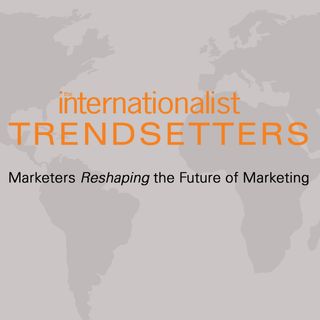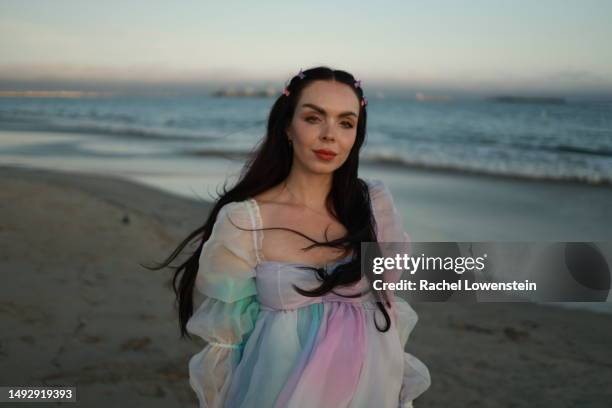
Shell’s Rahul Malhotra Outlines How AI has Equipped Teams with Global Access to the Company’s Vast Creative Assets…
Rahul Malhotra is responsible for global brand strategy and architecture for the Shell brand family, which includes overseeing brand identity, brand stewardship, employee ambassadorship, and brand purpose. Over 125 years old and valued at over $50 billion, the Shell brand is one of the world’s top 23 most valuable brands, and its yellow and red scallop shell logo is one of the most recognizable symbols around the globe.
Shell follows a single brand strategy and employs roughly 3000 empowered frontline marketers and another 3000 agency partners in the 50 markets worldwide that use the trademark.
While AI may be one of the most discussed issues in marketing and advertising now, Rahul Malhotra is doing more than talking about it. He’s worked to help Shell teams in every country have better access to the company’s vast creative resources through new AI tools.
To learn more from Rahul Malhotra about how brands can use AI to better access their wealth of creative assets, watch the video interview on Internationalist Marketing TV (IMTV) on YouTube by CLICKING HERE.

Shell created a series of AI and automation initiatives as part of its Brand Operations 2.0 project. They include SHELL MACHINE VISION, SHELL AI CRAWLER and SHELL ARTWORK BUILDER. Each initiative resulted from a deep understanding of the global challenges associated with designing or retrieving creative assets, while also navigating the trademark and copyright risks. To arrive at their solutions, the Shell teams looked at a combination of data analysis, quantitative feedback, qualitative interviews and user experience observations by experts to find specific pain points.
These challenges ranged from the turnaround time for approvals by a central brand team to compliance issues like using an outdated logo or font. One huge pain point involved the human challenge of searching thousands of campaigns with icons, illustrations, photography, videos and other imagery. AI technology worked to sort and present requested items quickly, so they could be reused to save time-to-market, costs, and even the carbon footprint of shooting similar assets again.
To implement these varied AI solutions, Rahul Malhotra and the Shell teams often identified existing software or platforms through the help of IT procurement that could be skinned for the Shell brand. In other cases, Shell in-house AI specialists customized and designed solutions with brand subject matter experts, based on AI technology now widely used in manufacturing and assembly lines.
The results were remarkable. Not only was the asset creation process reduced by days or even weeks, improving compliance, but design team morale improved dramatically when repetitive work was elminated and their roles became more meaningful. Plus, the overall cost savings to produce new artwork or visuals for various communication objectives exceeded expectations.

Listen to Rahul Malhotra discuss how Shell transformed the use of its vast library of brand assets and to The Internationalist’s entire Trendsetters podcast series here on iHeartRadio’s Spreaker or wherever you download your podcasts.
In our conversation, we discuss the following:
- Tell us a little about the history of AI at Shell…
- Talk about Shell Machine Vision. The Shell brand is one of the world’s most valuable, and the company follows a single-brand strategy in about 50 markets that use the trademark. How did this initiative work in terms of implementing AI? And how did it benefit local marketing managers?
- Outline the context of the Shell Creative Hub—another massive task. Would you also share how you gauge the success of a project like this…
- I’m curious to learn more about Shell Artwork Builder. It sounds like you already have thousands of users, and countless assets have been produced in under 5 minutes using creative elements that immediately comply with Shell standards. And the cost savings are also impressive!
- Right now, have AI’s overall benefits been greater efficiency and faster results? Or freeing up people for more valuable roles? I don’t believe this has resulted in a need for less staff members. However, it might change how you work with your agencies… correct?
- Many marketers are unsure where to begin when harnessing AI’s efficiency. Where would you tell them to start?
- I’m assuming that the biggest brands have been experimenting with AI’s potential for some time. Does this give them a sustainable advantage, or can any company of any size harness its power?
- So, what’s next? Refining these products or more new ideas?
- Finally, do you think this is just the beginning of what AI can offer? Can you imagine where it will be in another year?
Rahul Malhotra believes corporations can transform the world around us profitably, better, and faster than governments. He works to leverage the scale and power of the private ecosystem as a force for good. He has certainly done this by being a champion for purpose within an organization. Now, he is demonstrating how technology can further improve the work lives and morale of design teams.
Over a 28 year career with Procter & Gamble and Shell, he has led several multi-billion dollar, global businesses as P&L head and helped shape the destiny of several global brands (e.g. Shell, Pampers, Vicks, Metamucil, Whisper/Always, Tide, Ariel, Olay). A true Internationalist, Rahul has lived in the US, the UK, Japan, India, Singapore and Switzerland while managing businesses in all continents.
His boasts a unique set of global and local experiences– from board directorships on complex joint ventures to government relationships, from championing digital transformation to taking on marketing, sales, logistics, manufacturing, and media spokesperson roles. Rahul Malhotra is a passionate historian and economist, and was a professional musician before choosing marketing and business as a career.



